My Musical Career | Part Twenty-Three
Transitioning to Oslo
In my previous post, I began to describe the process of transitioning from one part of my musical and personal life. From 1980 through 1983, I was happily ensconced in my consortium position with the University of Evansville, the Evansville Philharmonic, and the Owensboro Symphony. During these three years, I matured musically, spiritually and personally. I was married in August of 1981, and our eldest daughter was born in October of 1982. This was one month
before I went on leave of absence in order to accept a ten-week trial period as part of an audition for the position of principal timpanist of the Oslo Philharmonic. I had applied for the position in June of 1982, and was invited to play for the orchestra as part of the audition on Labor Day 1982. I was a little concerned that I might miss my daughter’s birth, which was supposed to occur from mid-to late October. I was fortunate that the trial period with the orchestra was scheduled from late November 1982 through late February 1983. I breathed a sigh of relief. I was able to welcome her into the world and spend Thanksgiving with my new family, and then it was off to Oslo, Norway.
Leaving for Oslo
Leaving for Norway so soon after my daughter’s birth was a hard thing for us all. Great credit goes to my wife for understanding what a possible career boost this trial period would be, and I am so proud of her for understanding and enduring this separation. I was not an easy thing for either of us, and I am cognizant of the fact that I got the better end of the deal, what with experiencing a new country, environment, orchestra, and so forth.
I flew to New York from Chicago just after Thanksgiving of 1982, where I was to connect with a Northwest Orient flight to Oslo out of JFK airport. My wife, daughter and in-laws saw me off from Chicago, and I met my parents and members of my family at JFK. Since there was a layover of a couple of hours, we had dinner at an adjoining terminal, then returned to the gate where my flight was to depart, and on the way, we received a pleasant surprise. None other than the great boxer Mohammed Ali and his contingent were heading in the opposite direction, and he took the time to stop and say hello to us all and chatted with us for about fifteen minutes. He was so cool! Then, it was on to the terminal and the time for good-byes was upon us.
The flight was a smooth one. Incidentally, this was the first time that I had ever flown on a 747, and the first time I had flown overseas. This was a big deal.
Apparently, it was big deal for my Dad, who liked to watch the big 747s take off as we waited for my flight to be called. He told me before I left that he could not believe how planes of that size could take off so gracefully. The flight was finally called and I boarded. It departed on time, and the flight was smooth and uneventful.
Arrival in Norway
The plane landed seven hours after departure, which, allowing for the change in time zone meant early morning Norway time. The plane landed at Gardemoen Airport, which was at that time one of two airports serving the Oslo area. Gardemoen is located about 25 miles out of Oslo, and in 1982 was where all overseas and long-distance flights arrived and departed. There was also a military airfield close by. The other airport, Fornebu, was located much closer and handled the smaller planes and intra-European flights.
I was met at the airport by one Terje Mikkelsen, who was the orchestra personnel and operations manager at the time. He was tall, large-boned and had a luxurious beard. He greeted me affably and assisted me in getting through customs, my luggage located and put in the car, and then we were off to Oslo.
Between talking with Terje on Saturday, and having dinner with Turi at her home, I had been brought up to snuff vis-à-vis the situation with the orchestra, regarding the audition procedure, and its timing, as well as the orchestra, and its daily and weekly operation.
Meeting the Orchestra
The weekend passed rapidly, and on the last Monday in November, 1982, I arrived at the Konserthus for the first day of my trial period. The Oslo Philharmonic had been founded in 1918 under the mame Filharmonisk Selskaps Orkestret. It started out giving concerts with a roster of about 45 musicians at the Oslo University Hall called the “Aula” in Norwegian, which remained the orchestra’s home until the move to the Konserthus in 1977. From 45 musicians the orchestra grew to a roster of 65 in 1960, and in 1977 it had 77 permanent members. Conductors of the orchestra included Odd Gruner-Hegge, Øivind Fjelstad, Herbert Blomstedt, Militiades Carides, and Okku Kamu. Mariss Jansons was appointed chief conductor from 1979, and was starting his fourth season with the 1982-1983 season. The orchestra’s roster had expanded to 90 permanent members by the time I started my trial period.
Principal players at time included Stig Nilsson, one of two concertmasters, the other position being vacant; Arne Jørgen Øian, principal second violin; Otto Berg, principal viola; Anne-Britt Sævig Årdal, principal cello; Svein Haugen, principal bass; Erik Njord Larsen, principal oboe; Per Øien, principal flute; Erik Andreasen, principal clarinet; Per Hannisdal, principal bassoon; Odd Ulleberg, principal horn; Jan-Fredrik Christansen, principal trumpet; Aline Nistad, principal trombone, Marcus Knight, tuba. The percussion section was headed by Per Erik Thorsen, and included Trygve Wefring, who was also the orchestra’s assistant timpanist, and Per Melsæter, who had just joined the orchestra as third percussionist.
Other members of the orchestra who would become friends and valued colleagues later on include Andrew Cunningham, the orchestra’s world-class piccolo player; Frøydis Ree Wekre, assistant principal horn; Terje Nymark, section clarinet and e-flat clarinet; Knut Bjærke, section bassoon and contrabassoon; Torliev Nedberg, second bassoon, and Ola Rønnow, bass trombone.
The orchestra was excellent, and Mariss Jansons was doing yeomen work to build the orchestra up and turn it from a great regional orchestra into a world-class ensemble.
Weekly Routine
At the time (and for many years afterwards), the orchestra rehearsed from the hours of 10:00 am until 2:00 pm, with a half hour break, or “pause” for a light lunch. This was on Mondays through Thursdays. There were generally two concerts weekly – Thursday and Friday evenngs at 7:30 pm. The exceptions were when there was a Wedenesday evening concert; then the second concert for the week was moved to Saturday afternoon at 1:00 pm – presented as a “Familiekonsert”. Then rehearsals for the Wednesday concert were Monday through Wednesday, with Thursday, Friday and Saturday mornings being reserved for the Familiekonsert.
Rehearsals were longer than I was used to. In the USA, rehearsals were then, and in most cases, still are two and a half hours, with a twenty minute break in the middle (depending on whatever master agreement the organization concerned is working under). Four hours seemed long to me, even with the half hour break in the middle.
Instruments and First Concerts
The instruments at my disposal were quite good – a complete set of Hinger Touch-Tone timpani – including a 20 inch
piccolo. These were purchased on the recommendation of the retired timpanist, Knut Fjeldhøi, and were about four years old when I arrived in Oslo for my audition period. They had Remo clear heads mounted on them, except for the 20 inch piccolo, which had a Remo hazy head mounted on it.The second set was a set of Ludwig Professional Symphonic timpani – four drums – the standard sizes 32, 29, 26 and 23 inch. These had Ludwig Ensemble heads on them, and they were also relatively new.
The percussionists were extremely cordial and helpful during my period. They treated me as if I were a regular member of the section and they were excellent musicians, one and all. I had the chance to spend time with Per Erik at his home in Hønefoss during the Christmas break, and with Tryve at his home in Drøbak during the same period. I had lunch and dinner with the youngest member of the section, Per Melsæter and got to really know him well.
The first concerts – the Wednesday night Pops concert and the Saturday Familiekonsert went well. The same was true of the following week’s program, which included the Tchaikovsky Sixth Symphony as its main work. Mariss had a way with Tchaikovsky, and he rehearsed it carefully, so that by the time we came to play the concerts, the orchestra was thoroughly prepared. I gave my best, and it apparently was good enough to earn me a bow at the conclusion of the concerts. My colleagues nodded approvingly to me as we left the stage, and I took that as a good sign that I started my audition period on a very positive note.
A Little Confusion
After that first concert, I was feeling really good. I was still staying at Turi Ebbesen’s house, so I went back to my room and retired for the night. I fell into a deep sleep, and awoke feeling refreshed. It was pitch black outside when I looked out the windows, but I did not think anything of it as I figured that was the way it was supposed to be in Norway at this time of year. I looked at the clock and read 6:30 am. I drew a warm bath, and when it was full, was about to get in, when I checked the clock again. Imagine my chagrin when I realized that it was not 6:30 am, but 12:30 am! I had been asleep only for an hour – a deep sleep, but only an hour! Jet lag got me big time! Needless to say, I couldn’t get right back to sleep, so I took my bath, then read away half the night until I could sleep. Luckily, that was the only time that this happened to me. Next day, I had acclimated somewhat!

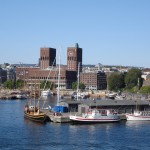
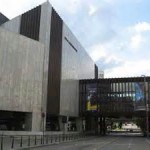
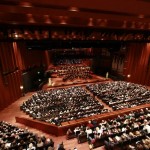
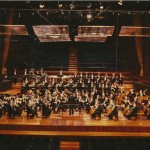
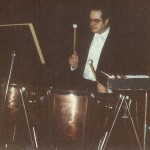
Recent Comments